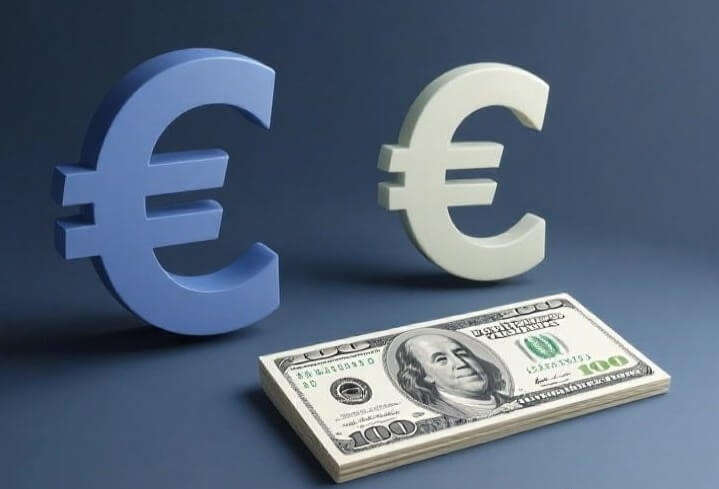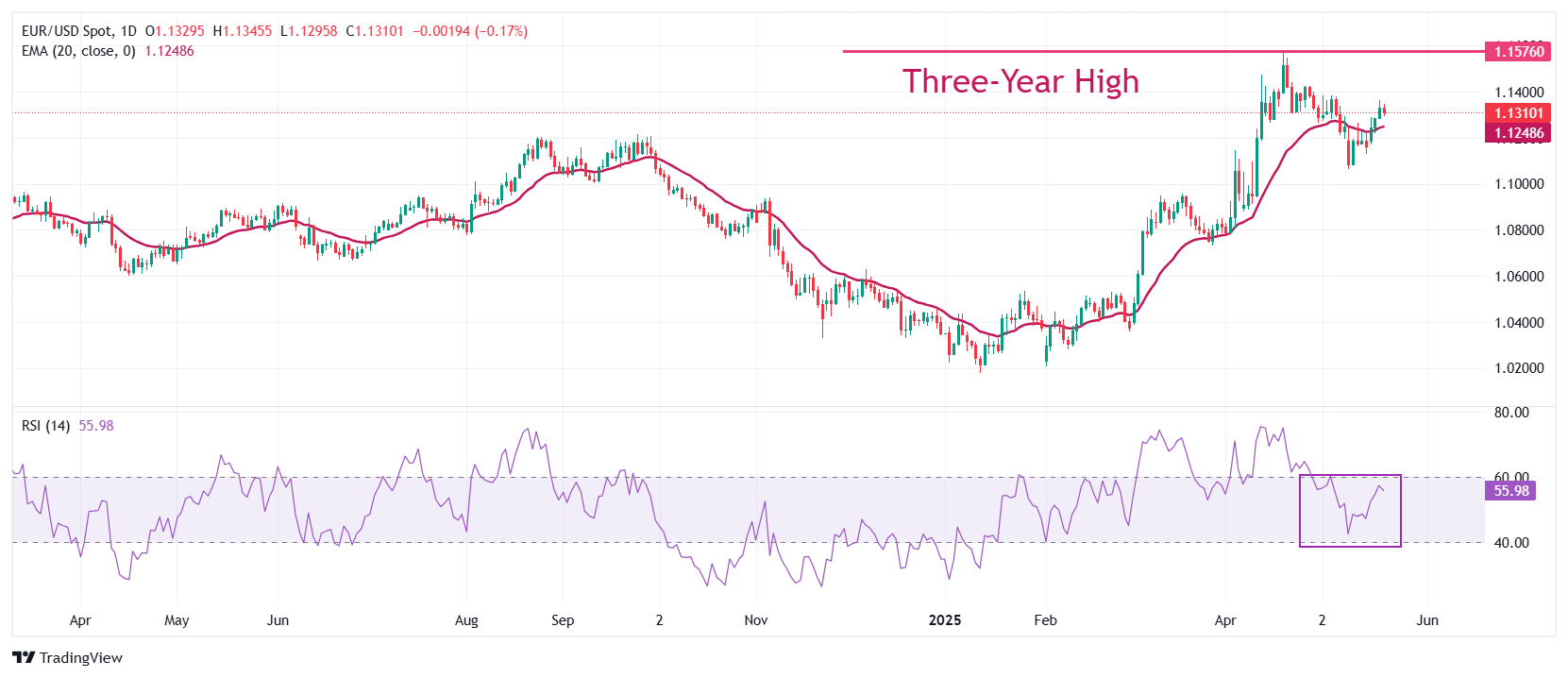
EUR/USD slips to near 1.1310 as the flash Eurozone PMI data surprisingly contracted in May.
US President Trump warns that Russia could avoid ending the war in Ukraine.
ECB’s Nagel is hopeful of an EU-US trade deal.
EUR/USD faces selling pressure and falls to near 1.1310 during European trading hours on Thursday. The major currency pair drops as the Euro (EUR) underperforms after the release of the surprisingly weak preliminary Eurozone HCOB Purchasing Managers’ Index (PMI) data for May. The report showed that the Composite PMI fell to 49.5 from 50.4 in April, suggesting that the overall business activity declined. A figure below the 50.0 threshold is seen as a contraction in business activities.
According to the PMI report, activities in the services sector contracted unexpectedly for the first time since November 2024, while the Manufacturing PMI contracted at a slower-than-expected pace. Signs of business activity contraction are unfavorable for the Euro.
Additionally, uncertainty over the outcome of the Russia-Ukraine ceasefire talks in Vatican City has also weighed on the Euro. On Wednesday, United States (US) President Donald Trump ruled out hopes of a ceasefire after stating in a private conference call with European leaders that Russian leader Vladimir Putin isn’t ready to end the war because he thinks he is winning, the Wall Street Journal (WSJ) reported. Diminishing hopes of a truce between Russia and Ukraine could keep the Euro on the backfoot.
There is a notable shift in US President Trump’s stance on war in Ukraine from what he stated in a post on Truth.Social earlier this week, that both nations have agreed to immediate truce talks, and expressed confidence that both countries will focus on ending the war in Ukraine. However, Trump didn’t provide a timeframe for truce talks.
Another reason behind the pressure on the Euro is the firm expectation that the European Central Bank (ECB) will cut interest rates again in the June policy meeting. ECB officials have signaled the need for further monetary policy expansion to offset downside risks to Eurozone inflation. "In order to be able to keep inflation at the target of 2%, [the ECB] may have to come below the natural rate in the range of 1.5% to 2%, ECB Governing Council member and Governor of the Bank of Portugal Mario Centeno said on Wednesday.
On the global front, Bundesbank’s President Joachim Nagel has expressed confidence over progress in trade talks with the US, stating that Washington and Brussels have acknowledged that trade conflicts have no winners, on German Television at the sidelines of the G7 meeting in Canada, Reuters reported. "I also believe that the US side now understands some things better, and I am a little more confident than I perhaps was a few days ago,” Nagel said.
Daily digest market movers: EUR/USD drops as Euro underperforms
EUR/USD trades slightly lower on Thursday as the Euro (EUR) underperforms its peers after the release of weaker-than-expected PMI data for the Eurozone. Meanwhile, the US Dollar (USD) is also down, as fears of a widening fiscal crisis have raised concerns about the already high national debt.
On Wednesday, the House Rules Committee, controlled by Republicans, approved President Donald Trump’s new tax bill and advanced it for a full House vote.
According to the nonpartisan Congressional Budget Office, Trump’s tax-cut bill would increase the US debt by $3.8 trillion over the decade, which is currently $36.2 trillion. On Friday, Moody’s downgraded the US Sovereign Credit rating to Aa1 from Aaa, citing concerns over large debt, which led to a sharp increase in borrowing costs for the administration.
On the monetary policy front, Federal Reserve (Fed) officials keep arguing in favor of holding interest rates at their current level amid unusually elevated uncertainty over the US economic outlook due to President Trump's imposition of new economic policies.
On Wednesday, JPMorgan Chase & Co. CEO Jamie Dimon supported the Fed’s decision to maintain a restrictive interest rate guidance, warning of stagflation risks from geopolitics, deficits, and price pressures, Bloomberg reported. “The Fed is doing the right thing to wait and see before it decides on monetary policy,” Dimon said and added, "I don’t agree that we’re in a sweet spot."
Meanwhile, investors await the preliminary US S&P Global PMI data for May, which will be published at 13:45 GMT.
Technical Analysis: EUR/USD wobbles around 1.1320

EUR/USD oscillates inside Wednesday’s trading range around 1.1320 on Thursday. The near-term outlook of the pair is bullish as it holds the 20-day Exponential Moving Average (EMA), which is around 1.1240.
The 14-period Relative Strength Index (RSI) oscillates inside the 40.00-60.00 range, suggesting indecisiveness among traders.
Looking up, the April 28 high of 1.1425 will be the major resistance for the pair. Conversely, the psychological level of 1.1000 will be a key support for the Euro bulls.
* The content presented above, whether from a third party or not, is considered as general advice only. This article should not be construed as containing investment advice, investment recommendations, an offer of or solicitation for any transactions in financial instruments.


